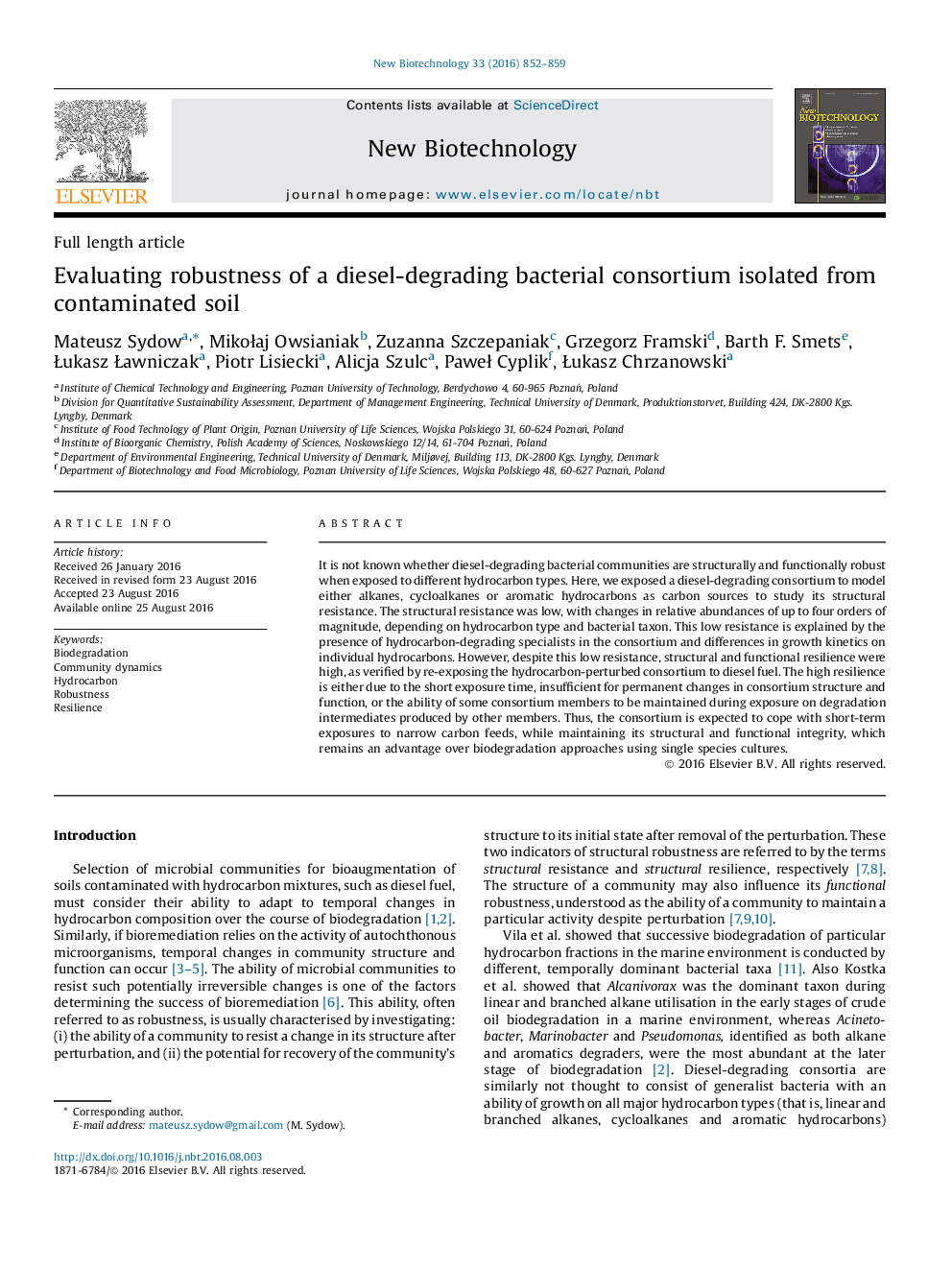| کد مقاله | کد نشریه | سال انتشار | مقاله انگلیسی | نسخه تمام متن |
|---|---|---|---|---|
| 6452887 | 44948 | 2016 | 8 صفحه PDF | دانلود رایگان |
- The consortium coped with short term exposures to narrow carbon feeds.
- Structural resistance was low but structural and functional resilience were high.
- This is an advantage over biodegradation approaches using single species cultures.
It is not known whether diesel-degrading bacterial communities are structurally and functionally robust when exposed to different hydrocarbon types. Here, we exposed a diesel-degrading consortium to model either alkanes, cycloalkanes or aromatic hydrocarbons as carbon sources to study its structural resistance. The structural resistance was low, with changes in relative abundances of up to four orders of magnitude, depending on hydrocarbon type and bacterial taxon. This low resistance is explained by the presence of hydrocarbon-degrading specialists in the consortium and differences in growth kinetics on individual hydrocarbons. However, despite this low resistance, structural and functional resilience were high, as verified by re-exposing the hydrocarbon-perturbed consortium to diesel fuel. The high resilience is either due to the short exposure time, insufficient for permanent changes in consortium structure and function, or the ability of some consortium members to be maintained during exposure on degradation intermediates produced by other members. Thus, the consortium is expected to cope with short-term exposures to narrow carbon feeds, while maintaining its structural and functional integrity, which remains an advantage over biodegradation approaches using single species cultures.
Journal: New Biotechnology - Volume 33, Issue 6, 25 December 2016, Pages 852-859
